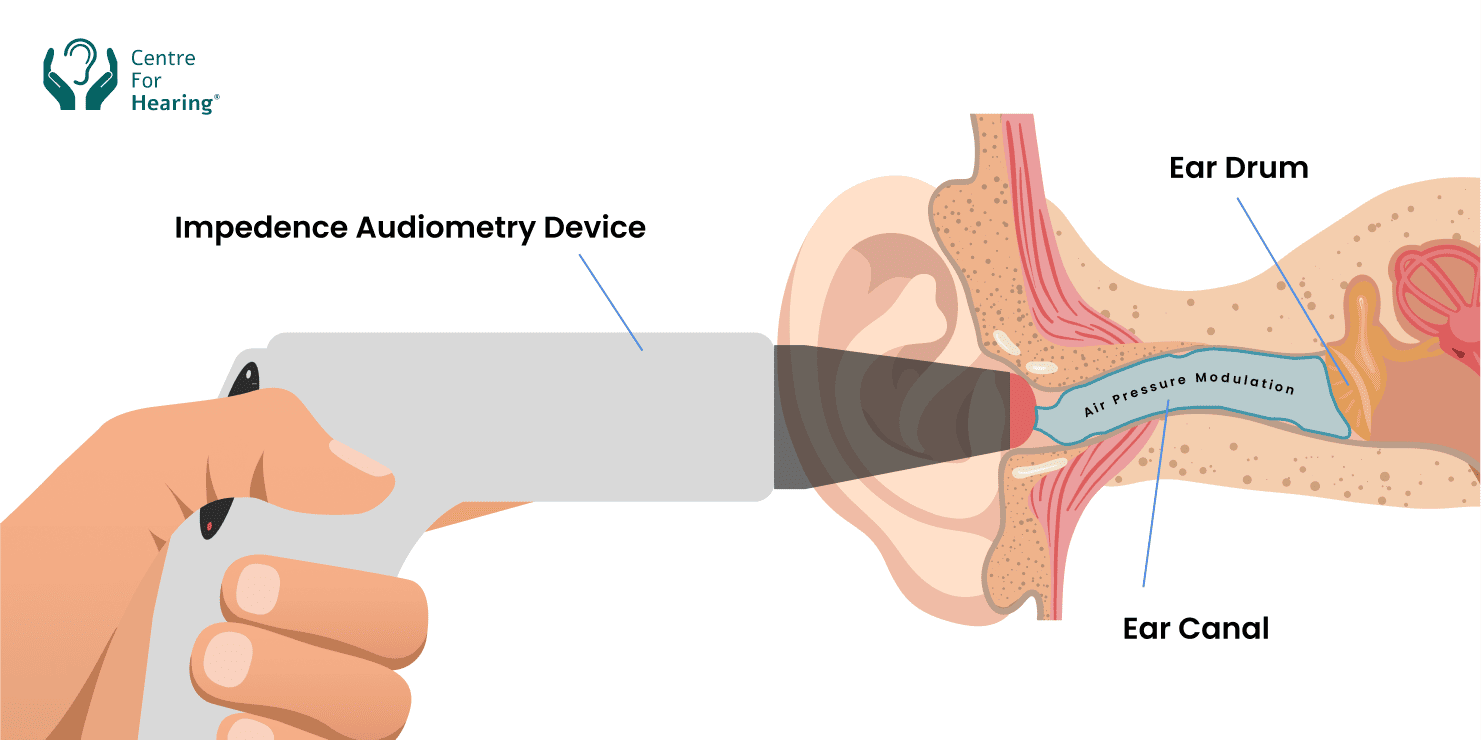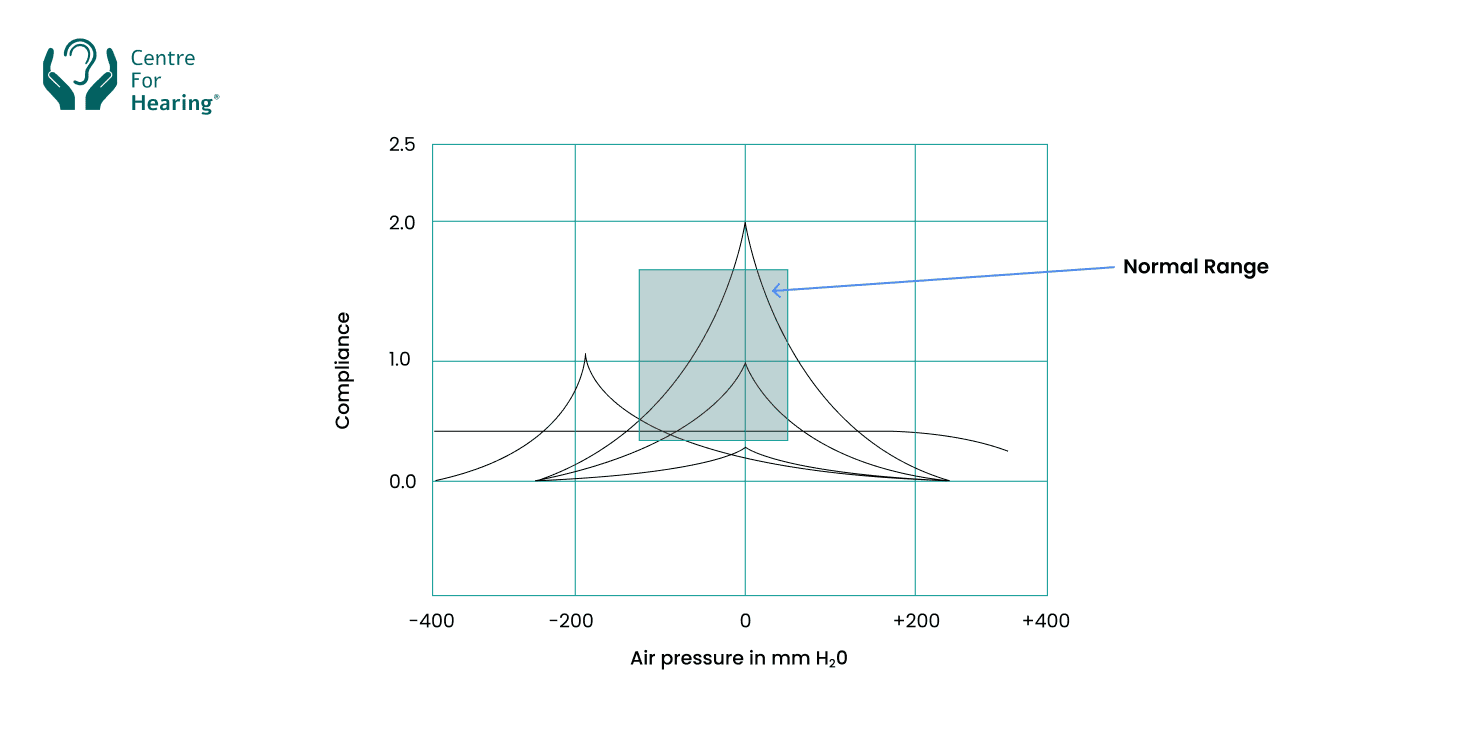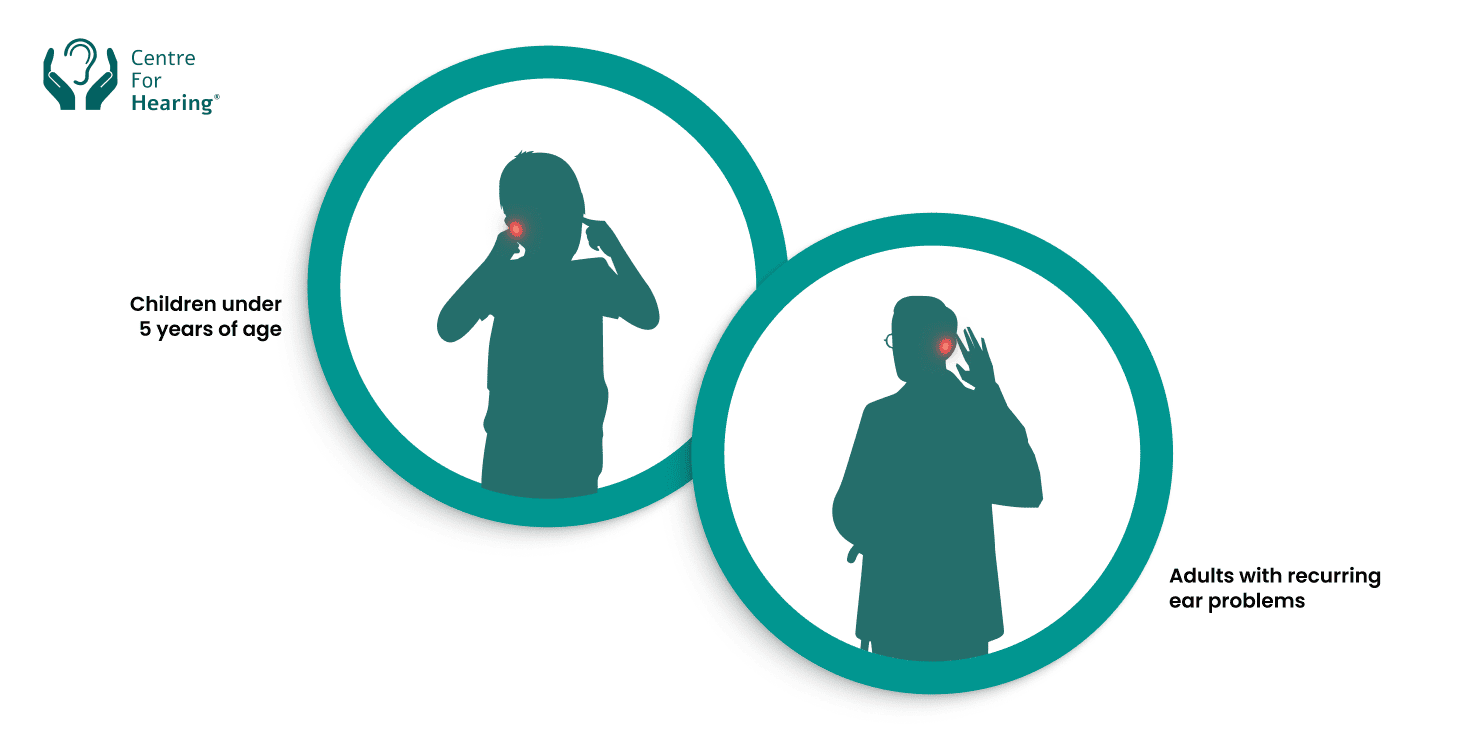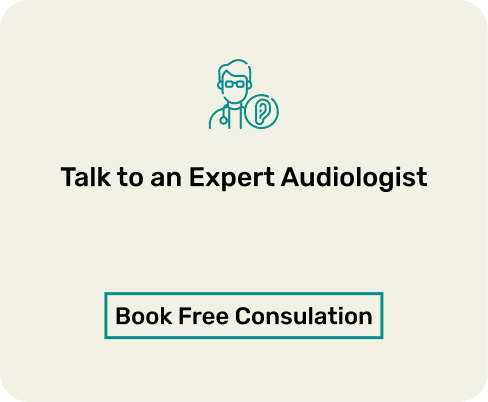The tympanometry test is usually performed along with your regular Pure Tone Audiometry (PTA) hearing test. Often, doctors will recommend this test to dig deeper and get a clear understanding of what exactly might be causing issues in your middle ear.
See, the PTA test tells us the basic details – what type of hearing loss you have (sensori-neural, conductive, or mixed) and how severe it is (mild, moderate, severe, or profound).
But if there’s some conductive element in your hearing loss – meaning there’s some problem in your middle ear – then we need the tympanometry test to confirm what’s actually happening there.
Why Do I Need a Tympanometry Test?
Tympanometry is an important hearing test for the middle ear that doctors often request alongside Pure Tone Audiometry (PTA) to get the complete picture of your ear’s health.
Think of it this way: PTA tells you there’s a problem, but tympanometry helps pinpoint where exactly the issue is located in your middle ear. While PTA identifies hearing problems, tympanometry determines whether issues stem from your eardrum, the tiny middle ear bones, or fluid buildup.
This combination helps your healthcare provider distinguish between different types of hearing loss and develop the most effective treatment plan for your specific condition.
Why is Tympanometry Performed?
Tympanometry (also called Impedance Audiometry or Immittance Audiometry) is a quick and non-invasive test used to check the health and function of the middle ear.
It measures:
- Eardrum (tympanic membrane) mobility
- Middle ear pressure
- Functioning of the Eustachian tube
- Presence of fluid or infection
- Acoustic reflexes of the middle ear muscles
The test helps your audiologist or ENT doctor understand whether your hearing loss or ear discomfort is caused by a middle ear problem rather than the inner ear or nerve.
What’s Inside the Middle Ear?
Your middle ear is basically a tiny room behind your eardrum. It’s smaller than your thumbnail but contains three of the smallest bones in your body. These bones, with wonderful names like the hammer, anvil, and stirrup, work together like a sophisticated relay team.
When sound waves hit your eardrum, these little bones spring into action. They grab those vibrations and pass them along to your inner ear, amplifying them by about 30 times in the process. Pretty clever engineering, really.
But here’s where things get interesting (and sometimes problematic). That tiny room connects to your throat through a tube called the Eustachian tube. This connection is supposed to keep air pressure balanced and drain any fluid that shouldn’t be there.
When it works well, you don’t even notice it. When it doesn’t… well, that’s where problems start.
What Makes Impedance Testing So Clever

Now, here’s what makes impedance audiometry brilliant: it doesn’t need you to tell us what you’re hearing. Instead,
It eavesdrops on a conversation between your ear and brain that happens automatically.
The test uses a soft probe that sits gently in your ear canal. It changes the air pressure slightly and watches how your eardrum responds. A healthy eardrum moves freely, as a drum skin should. But when there’s fluid behind it, or if those tiny bones aren’t moving properly, the eardrum behaves differently.
This way, the ear pressure test helps us understand how well your middle ear is functioning.
Most patients describe the sensation as similar to being in a lift or aeroplane, just gentle pressure changes that last a few seconds. Children often find it fascinating rather than scary, especially when we explain that we’re checking if their eardrums can “dance” properly.
The whole process takes about five minutes per ear. No loud sounds, no uncomfortable headphones, and definitely no pain.
Analysing What Your Middle Ear is Telling Us

The results of impedance audiometry appear as graphs that might look like mountain peaks, but they’re actually detailed maps of how your middle ear functions. A nice, sharp peak in the middle usually means everything’s working beautifully. Your eardrum is moving freely, those tiny bones are doing their job, and air pressure is balanced.
But sometimes, the peak shifts to one side, suggesting pressure problems. Other times, it becomes flat or disappears entirely, often a sign that fluid is gatecrashing the party in your middle ear.
Occasionally, we see multiple peaks or unusual shapes that point to more complex issues.
We also conduct something called the ‘acoustic reflex test’. When a loud sound reaches your ear, tiny muscles automatically tighten to protect your hearing. It’s like your ear’s built-in safety system. These reflexes can tell us whether your hearing nerve is working properly and if those protective mechanisms are functioning.
What’s particularly useful is that these tests work together to create a complete picture. One test might suggest fluid, another might confirm that your hearing nerve is fine, and together, they guide us towards the right solution.
Concerned about hidden ear issues and frequently searching for an expert “audiologist for tympanometry near me in Delhi”? Look no further. Book an impedance audiometry test at your nearest Centre for Hearing®. Call 9811227269.
Impedance Audiometry: Common Problems That We Uncover
So, what are the common issues that impedance audiometry can find out?
1. Fluid
Fluid in the middle ear is probably our most frequent discovery, especially in children. This fluid in the ear test is particularly important for young patients, as tympanometry for children can detect fluid sitting there for months without anyone realising it.
2. Ear Infections
Infections create their own distinctive patterns on our tests. Active infections usually announce themselves with pain and obvious symptoms, but chronic, low-grade infections can be sneakier. They simmer away in the background, gradually affecting hearing without dramatic symptoms.
3. Eustachian Tube Problems
This affects adults more than children. Many people experience that annoying ear pressure or feeling of fullness that comes and goes. Our blocked ear test can pinpoint whether those tubes are working properly or need some help.
Less commonly, we find problems with the tiny bones themselves. They might become disconnected (usually from trauma or chronic infection) or stuck in place (often from a condition called otosclerosis).
These findings also explain why someone might hear conversations but struggle with certain frequencies.
Who Really Benefits from Impedance Audiometry Testing?

Usually, children top our list, particularly those under five. Young kids can’t always tell us when their hearing isn’t quite right, and small amounts of fluid can significantly impact speech development and learning.
Adults with recurring ear problems find tremendous value in impedance testing, too. Many people live with intermittent ear pressure, occasional pain, or subtle hearing fluctuations that their doctors can’t quite explain.
Sometimes, hearing aid users develop middle ear issues that affect how well their devices work. When someone complains that their hearing aids aren’t performing as well as they used to, impedance testing helps us determine whether the problem lies with the device or changes in their ear function.
Getting Ready for Your Impedance Audiometry Test
The beauty of impedance testing is that there’s very little preparation required. However, a few things can affect accuracy, so it’s worth knowing about them.
- If you’ve got an active ear infection with discharge, we’ll typically want to treat that first. The probe needs to create a good seal in your ear canal, and drainage can interfere with that. But don’t worry; we can reschedule easily once the infection settles.
- Recent air travel or scuba diving might temporarily affect your results. Those activities can create pressure changes that take a day or two to fully resolve. If you’ve done either recently, just mention it when you arrive.
- Excessive earwax rarely causes problems, but severe blockages might need addressing first. We can check this when you arrive and sort it out if necessary.
- The main thing is simply to turn up! No special preparations, no fasting, no complicated instructions. Just bring yourself and any questions you might have.
Impedance Audiometry Testing in India: Why Choose Centre for Hearing®
At Centre for Hearing®, impedance audiometry isn’t just another test we offer. It’s an integral part of how we understand your hearing health. Our audiologists have performed thousands of these tests over more than four decades, developing an expertise that comes from both advanced training and real-world experience.
In fact, as an experienced ENT clinic with impedance audiometry test in Delhi, we’re a leading provider of the middle ear test in Delhi. Our equipment is calibrated regularly and represents the latest in diagnostic technology. The facilities are designed with patient comfort in mind. Testing rooms are quiet and comfortable, and our staff understand that any medical test can feel a bit daunting.
But more importantly, our team knows how to interpret results in the context of your individual situation, offering you a comprehensive tympanometry test in Delhi. You can find our facilities across North India:
- Gurgaon, Delhi
- Punjab: Ludhiana, Patiala, Jalandhar
- Chandigarh Tricity Area: Chandigarh, Mohali, Panchkula
To find the nearest centre to your location, click here.
Ready to understand what your middle ear is telling you?
Contact Centre for Hearing® at +91 9811 227 269 to schedule your comprehensive hearing evaluation.
Frequently Asked Questions
1. What is impedance audiometry, and how does it work?
Impedance audiometry is a quick, painless test that measures how well your eardrum and middle ear bones respond to sound and pressure changes. A small probe sits gently in your ear canal and creates slight pressure variations while measuring your eardrum’s movement. It’s completely objective; you don’t need to respond to anything, making it perfect for testing children or anyone who can’t participate in regular hearing tests.
2. What conditions can impedance audiometry detect in the middle ear?
The test can identify fluid buildup behind the eardrum, ear infections (both active and chronic), Eustachian tube dysfunction, problems with the tiny hearing bones, and various forms of middle ear disease. It’s particularly good at detecting “silent” fluid in children who aren’t showing obvious symptoms but may be struggling with hearing or attention issues.
3. Is impedance audiometry painful, and how long does it take?
The test is completely painless. Most people describe it as feeling like gentle pressure changes similar to being in a lift or aeroplane. Each ear takes about 2-3 minutes to test, so the entire procedure is usually finished within 5-10 minutes. Children often find it interesting rather than uncomfortable.
4. Who needs impedance audiometry testing?
This test is especially valuable for children under five who can’t reliably complete regular hearing tests, adults with recurring ear pressure or infection problems, people with hearing aids experiencing performance changes, and anyone whose regular hearing test results don’t match their symptoms. It’s also used when doctors need objective evidence of middle ear function.
5. How should I prepare for an impedance audiometry test in Delhi?
There’s minimal preparation needed. Avoid putting oils or creams in your ears on the test day, and let your audiologist know if you’ve recently had air travel, diving, or active ear infections. Excessive earwax rarely interferes, but severe blockages might need removal first. Otherwise, just turn up as you are!
6. What do impedance audiometry results mean?
Normal results show a clear peak on the graph, indicating healthy middle ear function. Abnormal patterns might show shifted peaks (pressure problems), flat lines (often fluid), or absent reflexes (possible nerve or muscle issues). Your audiologist will explain what your specific results mean and whether any treatment is recommended.
7. How much does impedance audiometry cost, and where can I get it done?
At Centre for Hearing®, impedance audiometry is typically included as part of comprehensive hearing evaluations. We offer this testing at our clinics in Chandigarh, Delhi, Gurgaon, Dwarka, and other locations. For specific tympanometry test price and to book your appointment, contact us at +91 9811 227 269.




















